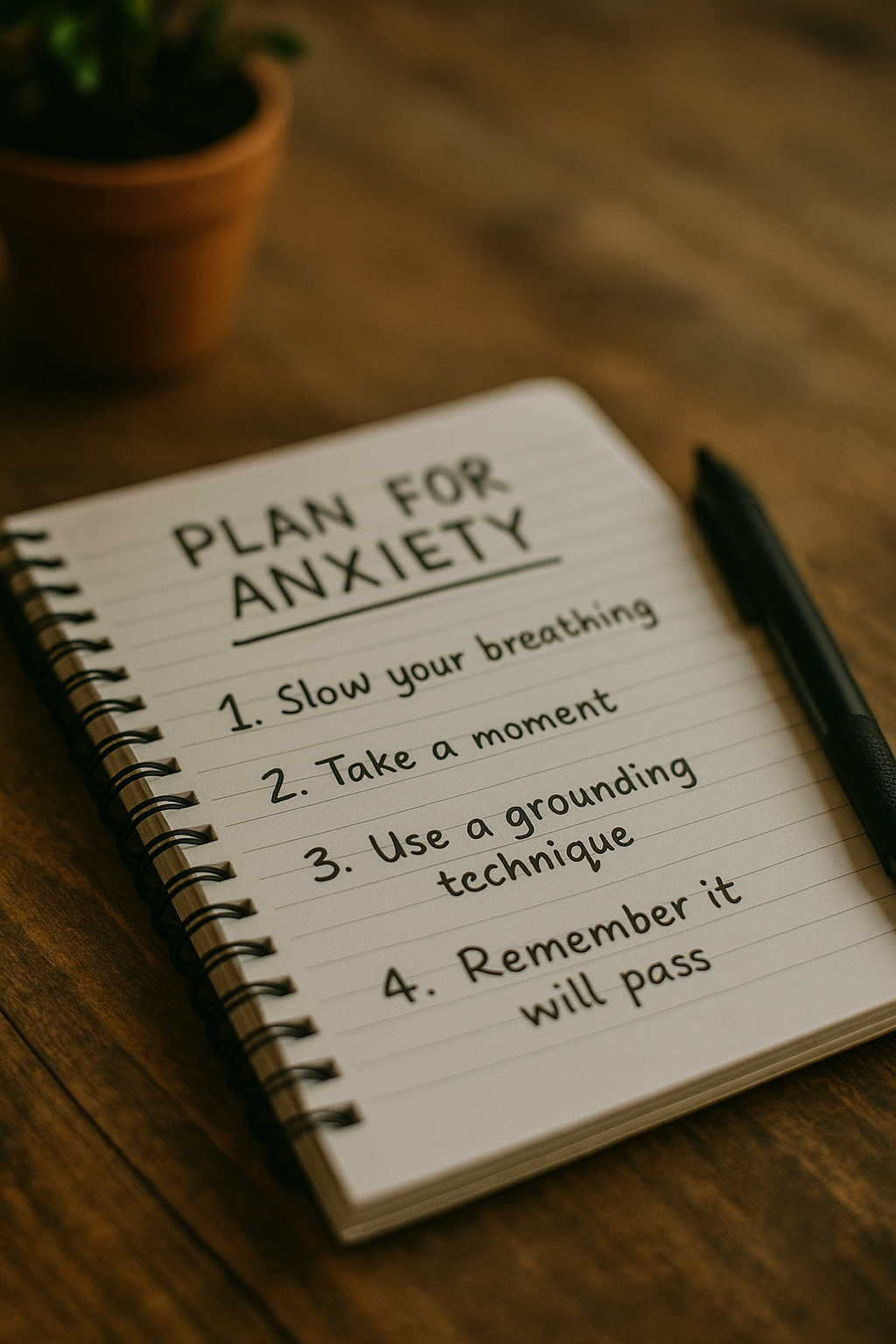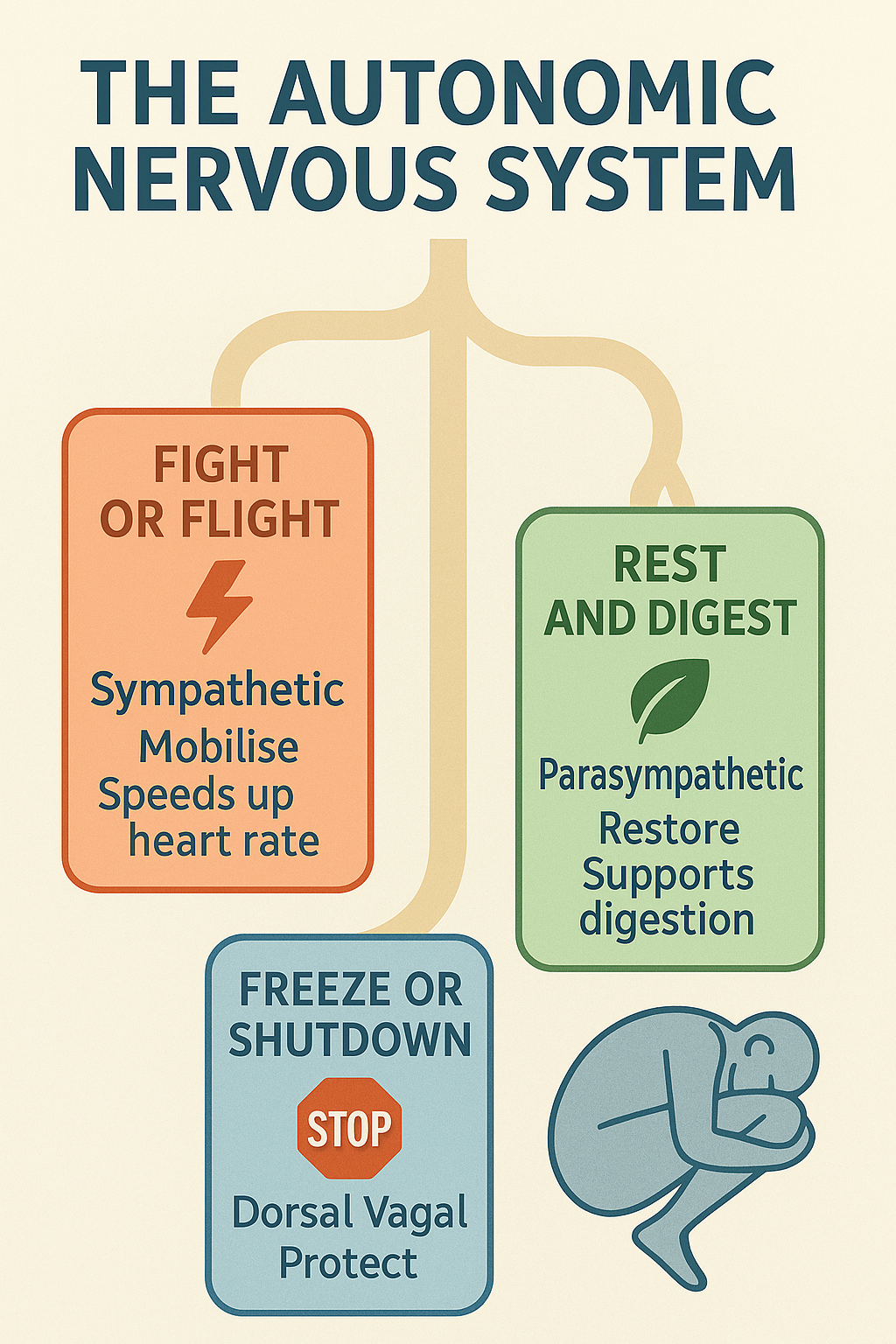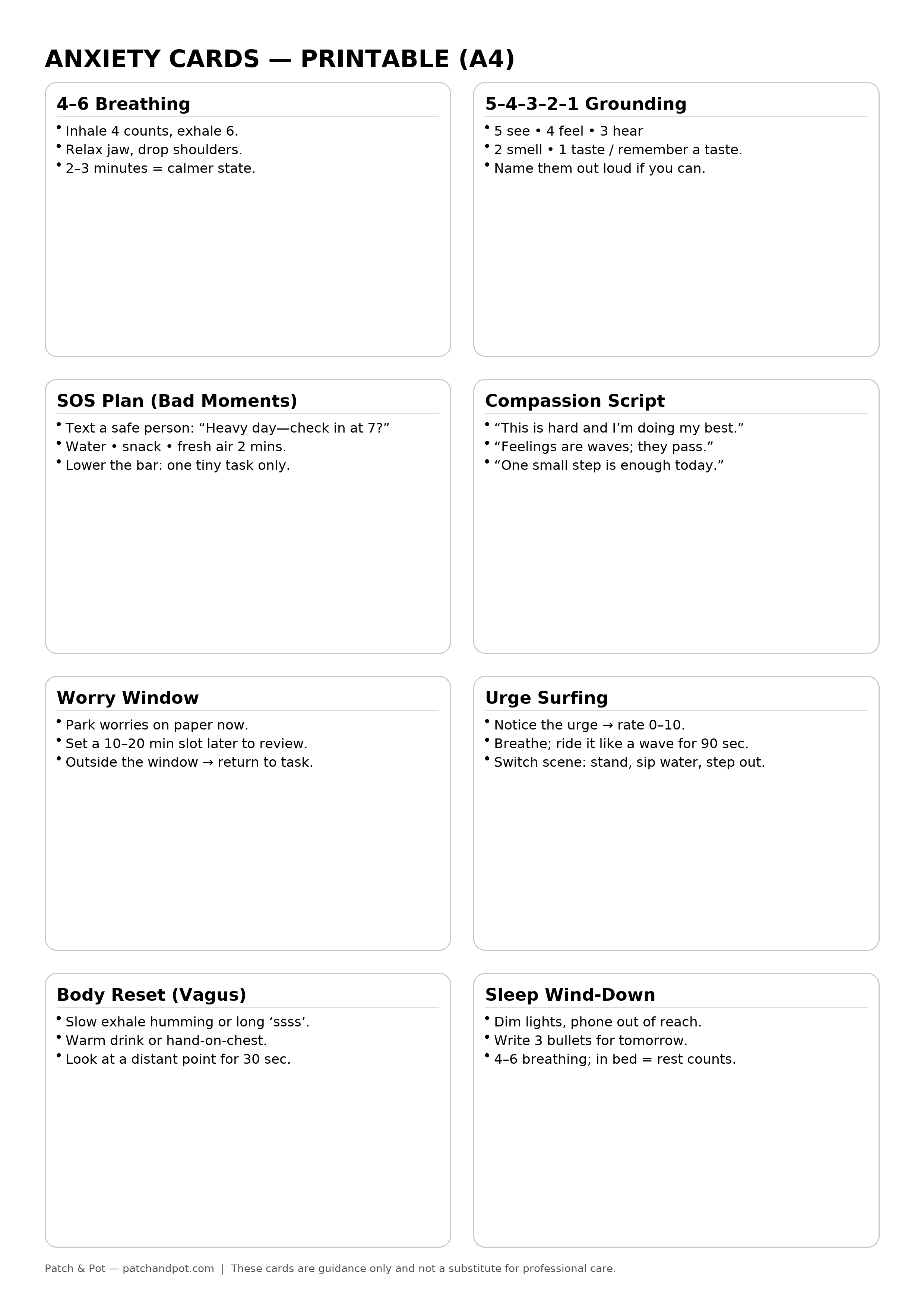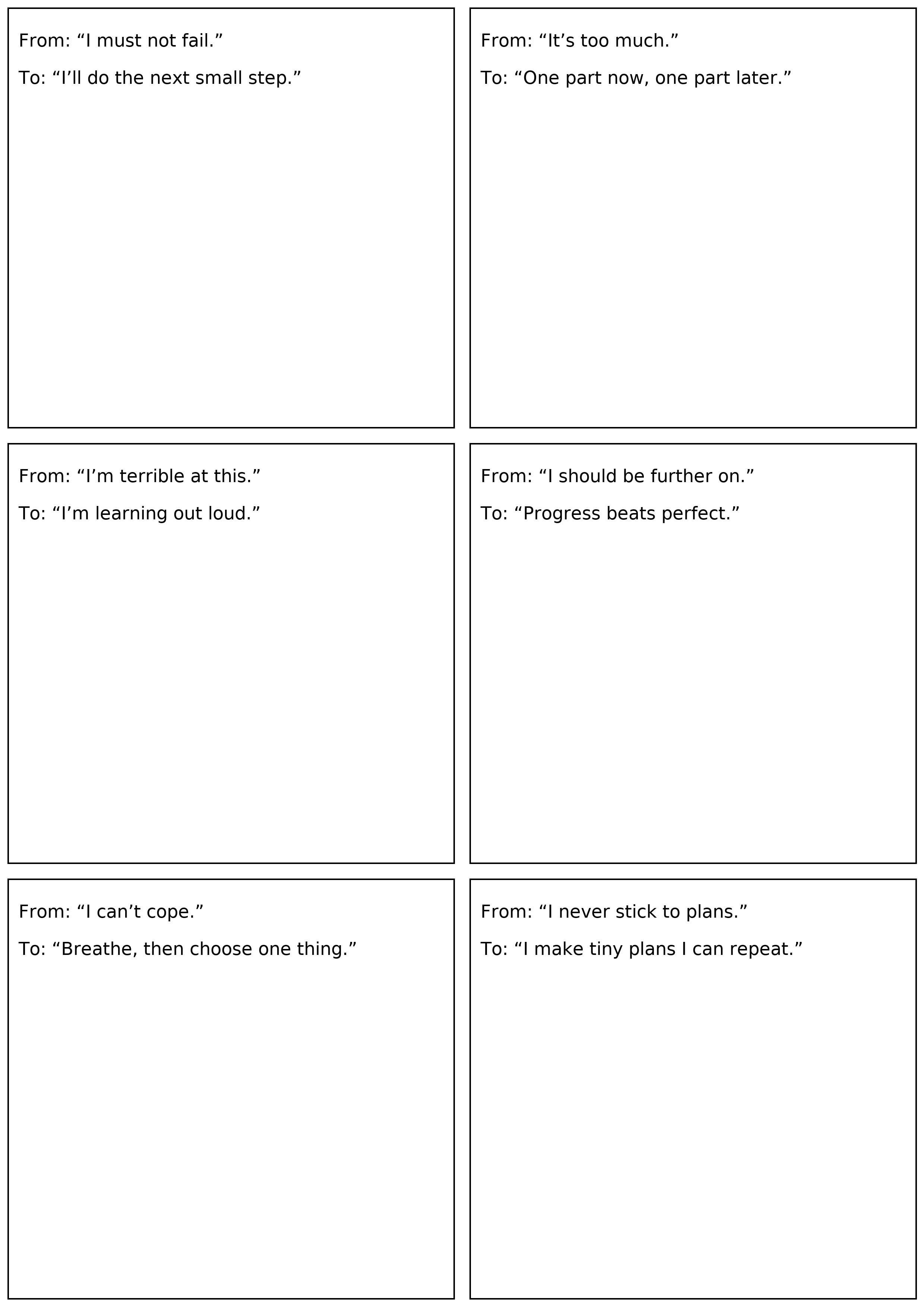
Understanding Anxiety
Anxiety is not weakness — it’s the brain’s alarm system doing its best to protect you. Sometimes, though, the alarm becomes oversensitive and rings when you are not in danger. This page explains how anxiety works, what it feels like, and practical steps to steady the system.
1. What Anxiety Feels Like
Anxiety can appear as racing thoughts, physical tension, stomach upset, sweating, or feeling detached. It often shows up in ordinary places: mornings, emails, queues, bedtime.

2. Biology / How It Happens
Anxiety is driven by brain circuits, body chemistry, and survival instincts:
- Sympathetic nervous system: fight/flight response, flooding the body with adrenaline.
- Neurotransmitters: serotonin (mood), GABA (calm), norepinephrine (alertness), dopamine (motivation).
- Cortisol: stress hormone — helpful in short bursts, unhelpful stuck “on”.
- Breathing and CO₂: fast shallow breaths raise alarm signals; slow exhale dampens them.

3. Day-to-Day Coping Tools
- Grounding 5-4-3-2-1: name 5 things you see, 4 touch, 3 hear, 2 smell, 1 taste.
- Breathing: in for 4, out for 6. A longer exhale signals safety.
- Movement: walk, stretch, or shake arms to burn off adrenaline.
- Warmth: wrap in a blanket, hold a mug, or run warm water over hands.

4. Exposure Ladders
Avoidance strengthens fear. Exposure ladders mean facing the fear gradually, step by step.
- Write a ladder from easiest to hardest situations.
- Start with a low step until the anxiety eases.
- Climb slowly, repeating steps as needed.

5. Thinking Tools
Supportive self-talk
Swap harsh inner words for kinder, believable lines.

Reframes
Reframing keeps the facts but adds choice and agency.

6. Printables
Important Note
The information on this page is for general understanding and support. It is not a substitute for professional medical, psychological, or legal advice. If you feel unable to keep yourself safe or someone else is at risk, call 999 (UK) immediately. If you’re outside the UK, contact your local emergency number.
For non-emergency concerns, consider speaking with a qualified health professional or one of the support services listed on our site.
 Patch & Pot
Patch & Pot